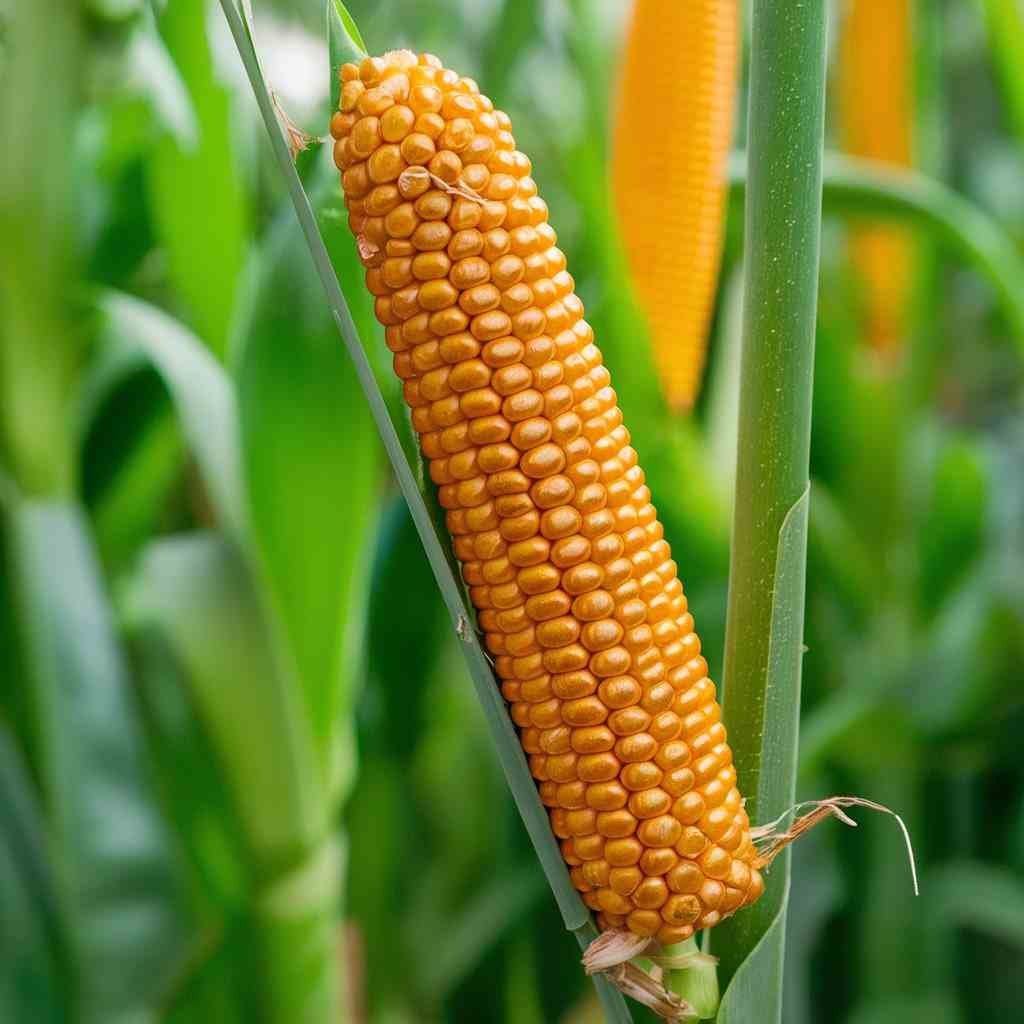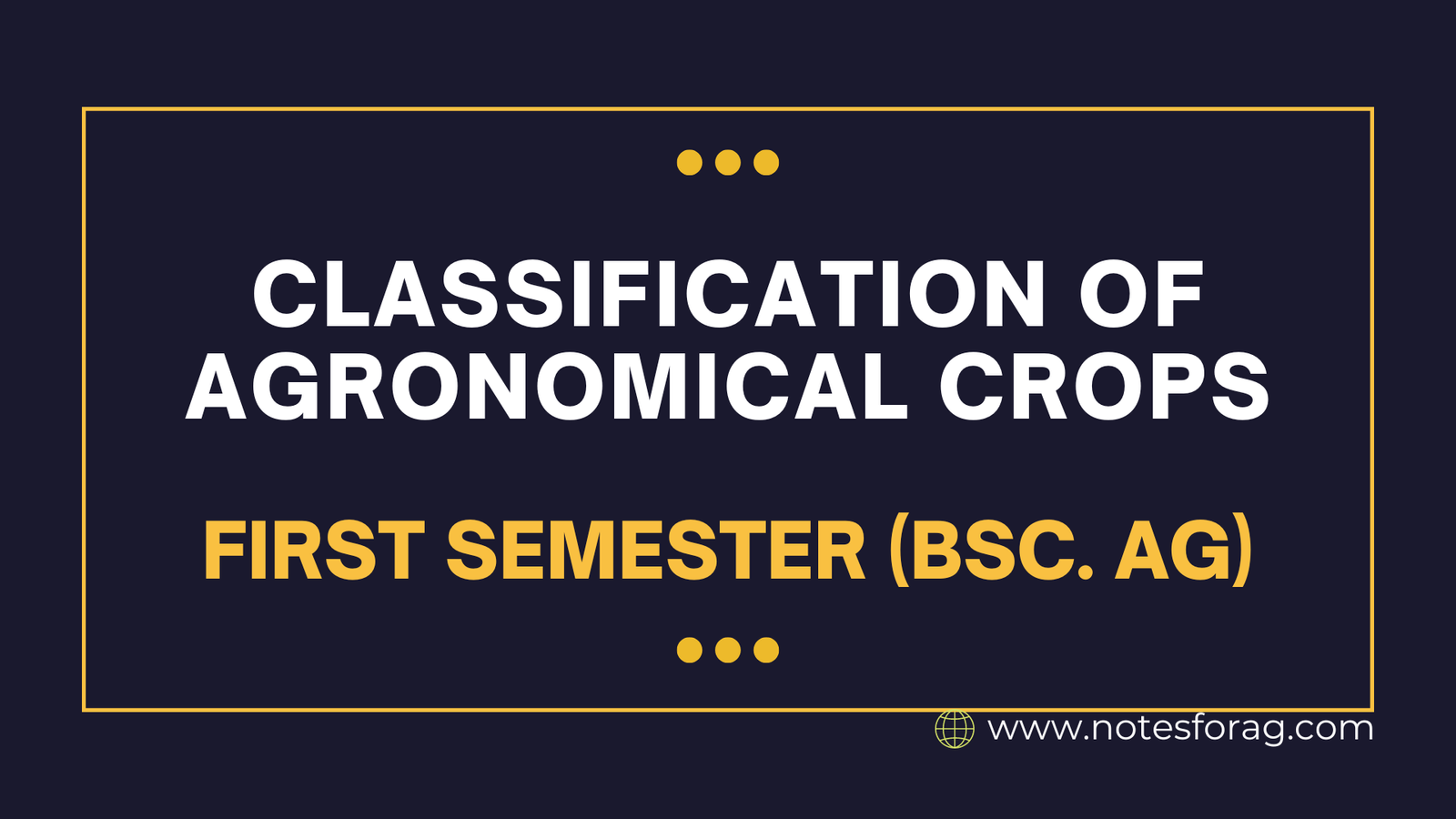Agronomical crops classification provides an orderly framework for classifying different plant species according to their traits, use, and environmental needs. Farmers and agronomists can better comprehend the wide variety of crops grown for food, fiber, fodder, and other uses with the help of this classification scheme.
Crops are classified based on a variety of factors, including their intended purpose (food, forage, fiber, or medicine), growth patterns (woody or herbaceous), life cycle (annual, biennial, or perennial), preferred environment (tropical, subtropical, temperate, or desert), photosynthetic pathways (C3, C4, CAM), and economic significance (staple, cash, industrial). Better resource allocation, breeding, and crop management are made possible by this methodical approach, which enhances agricultural systems all around the world.
Table of Contents
Introduction to Agronomical Crops
Agronomical crops are the foundation of agricultural operations and are essential to the economies and food security of the world. The main purposes of these crops, which include grains, legumes, oilseeds, fibers, and forages, are industrial use, large-scale food production, and animal feed. Agronomical crops are necessary for maintaining large populations and promoting economic stability, in contrast to horticultural crops, which are cultivated for ornamental purposes, personal use, or specialized food production.
Agronomical crops are important for reasons other than food. They play a crucial role in keeping the agricultural ecosystem in balance and guaranteeing a consistent supply of raw materials for numerous businesses. For example, while oilseeds like soybeans and sunflower seeds are essential for the production of edible oils and animal feed, grains like wheat and rice are the staple meal for a large section of the world’s population. The textile industry depends on the fibers from crops like cotton and flax, which emphasizes the crops’ economic significance.
In conclusion, agronomical crops are essential to both the world’s economic systems and food supply chains. Agronomical crops are distinguished from horticultural crops by their primary function and production scale, with the former being necessary for large-scale agricultural production. Gaining knowledge about the development and historical background of crop classification improves our capacity to efficiently manage and make use of these essential resources.
Grain and cereals are staples of world agriculture and human meals. The staple cereals of wheat, rice, corn, barley, rye, oats, and sorghum are essential to the diets and economies of many nations.
Wheat
Wheat is a versatile cereal grain, cultivated mostly in temperate regions. It belongs to the genus Triticum and needs well-drained soil and temperate temperatures, according to botany. Wheat is a primary source of flour used in pastries, bread, and pasta; its leftovers are fed to animals.
Rice
Rice, as a member of the genus Oryza, found primarily in Asian locations and grows well in warm, humid climates. Rice is a staple item in many cuisines, as it is consumed by over half of the world’s population. Additionally, it is used as a raw material in the brewing and distilling industries and in the production of rice bran oil.
Maize

Crops that are cultivated in a variety of climates include maize, or corn. It is a member of the Zea genus and needs lots of sunshine and rich soil. Beyond its use as a vegetable and grain for human consumption, maize plays a vital role in the production of biofuel and animal feed.
Barley
The genus Hordeum, which includes barley, can withstand a variety of climates and thrives in temperate regions. It serves as food and animal feed in addition to being the primary source of malt for beer and whisky.
Oats
The genus Avena, which includes oats, grows best in colder, wetter areas. Oats are utilized in animal feed and are eaten as oatmeal and rolled oats due to their high nutritional content.
Rye
Rye is a plant in the Secale genus that grows well in cooler climes and in poor soil. In addition to being a common ingredient in Eastern European baked goods, rye is also used to make whiskey and animal feed.
Sorghum

Sorghum is a member of the genus Sorghum, and it thrives in dry and semi-arid environments due to its excellent resistance to drought. It is utilized as a food crop, mostly in Asia and Africa, as well as a source of biofuel and animal feed.
These cereals and grains are important to the world’s agriculture and industry, in addition to being necessary components of human diets.
Legumes and Pulses
Pulses and legumes are an important class of agronomic crops that are mostly prized for their high protein content. A range of popular legumes, including beans, lentils, chickpeas, and peas, are included in this group. These crops are essential for both sustainable farming methods and human nourishment.
Legumes’ capacity to fix atmospheric nitrogen—a function made possible by symbiotic bacteria called Rhizobia—makes them unique. Legumes are an essential part of crop rotation systems because of this nitrogen fixation, which improves soil fertility. Legumes encourage more environmentally friendly farming methods by providing the soil with nitrogen, which lessens the demand for synthetic fertilizers.
Pulses and beans are versatile when it comes to cuisine. Lentils are a common ingredient in many different types of food, including Middle Eastern stews and Indian dals. On the other hand, beans can be used in soups, entrees, and salads. You can eat peas raw, dried, or in a variety of cooked recipes. Chickpeas are the main ingredient in falafel and hummus. This adaptability promotes the consumption of foods high in nutrients while also adding variation to diets.
Oilseeds and Fiber Crops
Fiber crops and oilseeds are important for the agricultural and industrial industries. Soybean, sunflower, canola, and peanut are the most popular oilseeds because of their high oil content and variety of uses. Soybean is widely recognized for its diverse applications in margarine, cooking oils, and as a vital component of biofuels. Because of its high oil content (18–20%), it is a crop with great extraction potential.

With an oil content of 40–50%, sunflower oil is highly prized in the culinary arts and is also utilized in the production of biodiesel and cosmetics. Canola, which has a low saturated fat level, is commonly used in food processing and cooking, but peanuts, or groundnuts, are well-known for their edible oil and as an ingredient in confections.
Conversely, fiber crops are essential to the textile sector. The most important crop for fiber is cotton, which grows best in warm regions and is prized for its supple, breathable fibers that can be spun into yarn and woven into fabrics. Cotton is grown with great care, including the preparation of the soil, planting, and control of pests. Mechanical pickers are usually used for harvesting. Grown mostly in humid areas, jute is prized for its robust, coarse fibers that are used to make ropes, hessian cloth, and burlap.
One of the most important steps in processing jute is the retting process, which involves soaking the stalks in water to separate the fibers. Another important crop for fiber is flax, which yields fibers used to spin linen, a fabric valued for its crispness and coolness.
Oilseeds and fiber crops are strategically grown and processed to fulfill the needs of the food, textile, and biofuel industries as well as to make a substantial contribution to the agricultural economy.
Frequently Asked Question(FAQ)
Why is it important to classify agronomical crops?
Classification facilitates agricultural planning, resource allocation, and research by organizing crops according to their properties and purposes.
How does crop classification aid in agricultural research and development?
Classification systems facilitate focused research and innovation in agronomy by offering an organized framework for examining crop diversity, genetic resources, breeding goals, and adaption techniques.
Related Articles

